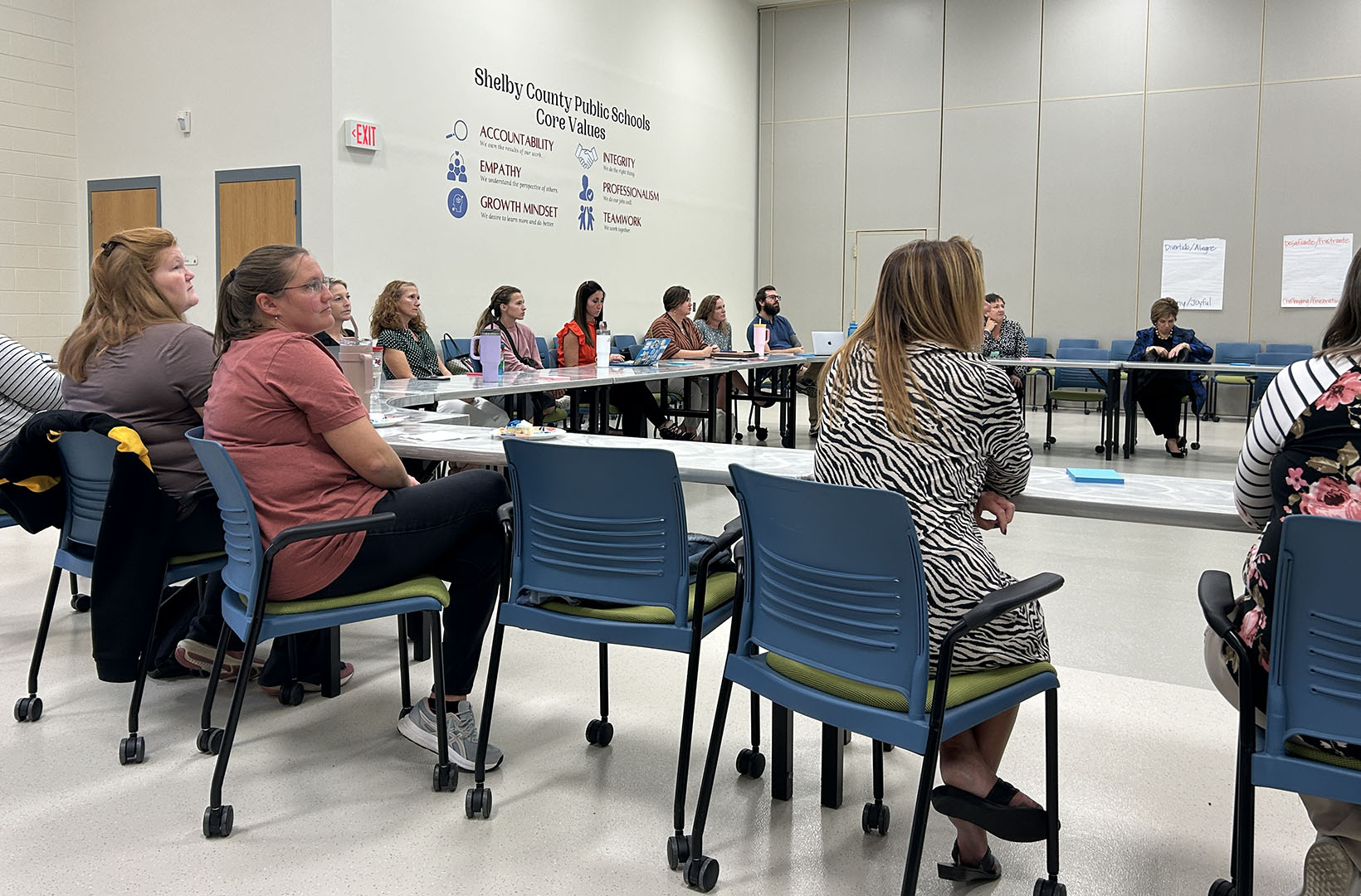This article is the third in a series of seven that focus on the core practices of world languages instruction. This series will try to open a window for world languages teachers, nontraditional world languages teachers and other educators as to what world languages education is about. The series will focus on two goals: to grow new leaders in the language learning profession, and to foster growth in students and teachers through effective instructional practices in language teaching.
Read the series:
- World languages: Strengthen your core!
- Core practices: Using the target language as the vehicle and content of learning
- Core practices: Backward design of world language curriculum
- Core practices: Teach grammar as a concept and use it in context
- Core practices: Using authentic texts and resources
- Core practices: Provide feedback to improve learner performance
By Nicole Naditz
nnaditz@gmail.com
You have taught your lesson. It was contextualized and comprehensible. You know your learners “got it” because your built-in checks for understanding gave them and you formative data demonstrating that they were on their way to both understanding the new words or language skill and beginning to be able to integrate the lesson into their personal language. You even maintained 90 percent target language and provided learners opportunities to use the target language as well (see the previous post in this series).
Your learners are ready for the next step – a step that addresses why most students signed up for the language in the first place.
A language class needs to be much more than an academic pursuit. Students want to be able to communicate with others in their new language, to have meaningful and productive – not perfect – conversations. As a result, students need frequent and varied opportunities to engage in interpersonal communication activities in their learned language. In fact, this is so important that interpersonal communication is Core Practice 2.
Specifically, the core practice states that teachers “design and implement interpersonal tasks for pair, small group and whole class instruction.” What does that look like? What kinds of tasks are interpersonal tasks? What would not make for an appropriate interpersonal task?
First, it is important to understand what constitutes an interpersonal task.
According to a presentation on Core Effective Practices – see page 23 – from the American Council on the Teaching of Foreign Languages (ACTFL), interpersonal speaking tasks require speakers to listen to each other, negotiate and interpret meaning, and arrive at an understanding. To do that, ACTFL says, speakers must use their background knowledge, focus on meaningful topics, monitor their own comprehension and provide assistance when their interlocutor (speaking partner) shows signs of not understanding.
If we are to design opportunities for learners to engage in interpersonal tasks that reflect all of these characteristics, we must develop learning experiences that prepare them to speak spontaneously on meaningful topics. These interactions also must allow students to demonstrate collaborative communication skills, while developing interculturality that allows them to navigate both their home and target cultures.
When planning lessons, educators must plan for communication, rather than for covering certain vocabulary lists, conjugations and other language features. That doesn’t mean we never teach vocabulary and structures, but rather we teach them in ways that emphasize their use in communication instead of just their linguistic features.
Such planning will include crafting building blocks that provide a foundation learners can use when the time comes to communicate. For novice learners – see the ACTFL performance descriptors – these building blocks are memorized chunks of language. Novice learners can’t accurately manipulate the grammar of the language when communicating spontaneously, but they can quite successfully work with language chunks to communicate about basic, personal topics. For interpersonal speaking and writing tasks, these chunks will include lessons and extensive practice in asking and answering questions on topics learners are familiar with, such as their basic personal information, their likes, dislikes and daily activities.
Here are some steps that may help infuse interpersonal communication tasks at the earliest levels of language learning:
- Language class is for communication. Instead of rows of desks, consider seating learners in such a way that they know who their “partner” is for partner activities and who the other members of their “small group” are for group communication activities. I personally use tables instead of desks, but when I still had desks, they were clustered. Each time I changed the seating chart – every time we start a new theme – students knew who their partner was in the new seating arrangement and who their group was.
- Provide input that exposes learners to the language used in conversations. This can come from you, but whenever possible, find and use videos (or audio) of other speakers, especially native speakers, using the targeted words and structures in conversation.
- Plan for learners to speak each day, preferably multiple times each class session. Make sure your learners aren’t expected to sit in silence all period while you talk or while taking notes and doing worksheets. That doesn’t mean they don’t ever take notes, do written practice or listen to your input, but each day, they should also have opportunities to use the language in conversations. If you are a teacher who assigns homework, your learners can practice reading and writing at home. It is much more difficult for them to arrange to practice interpersonal communication – especially speaking – outside of class.
- It’s important to distinguish between practice and assessment. Give the students ample opportunities to practice, but do not grade their practice activities. If they receive a grade, they are being assessed and they are not really safe to practice and learn from their mistakes.
- Teach and practice questions related to the vocabulary themes your students are learning. They start simply and the resulting conversations aren’t long or varied. What’s your name? How old are you? As they acquire more language, consider giving learners frequent opportunities to use a range of questions in the sequence below to support their comfort and facility with both the targeted language features and with their own conversations:
- Yes/no questions: Do you like to swim?
- Either/or questions: Do you prefer to swim or to play basketball?
- Open-ended questions: What do you like to do?
- Detail questions for more information, using questions words like “when,” “where” and “with whom.” Note that you will have to wait the longest for “why” and “how” questions because novice learners have very little language to use to support the answers. Once students learn more descriptive words, they can begin to ask and answer “why” and “how” questions.
- Design multiple activities that require students to ask questions of each other. In many classes, if there is any “talking” at all, it is the teacher who asks questions, while individual students answer the teacher. By having the students ask the questions, we address two specific needs of our learners:
- As eventual travelers who will use this language in the world, they will need to be able to ask questions as well as answer them, and
- By having students involved in asking each other questions, teachers increase the level of engagement in the classroom. Instead of a single opportunity for dialogue between a teacher and a student while the rest of the class listens, all students are conversing with each other. If you structure these conversations as mingling or inner-outer circle activities, your learners will get even more practice speaking, more practice interpreting what others say and more practice appropriately participating in conversations with others.
- Teach strategies to seek clarification, demonstrate interest and maintain the conversation. At first, start by teaching learners how to ask for repetition or spelling and also some simple phrases they can use to express an opinion about what the partner said. This allows them to be polite listeners who actively listen and react to what the partner said rather than merely waiting for it to be their turn to speak.
- If you use a textbook, scan the various proposed activities for opportunities to expand them and extend the resulting conversations so they require learners to ask and answer questions of each other or to continue beyond the original intent of the activity by asking for additional information from their partners.
- Give them a reason to speak. Have them survey each other, note the responses and generate a graph or statement summarizing the data they collected while speaking with their classmates.
- Give meaningful feedback whenever possible. Meaningful feedback goes beyond saying “good job” to actually providing suggestions that help the learner know what to do next time in order to be even more successful. You might use a free tool like Seesaw, in which students can record their conversations. You can listen, type written feedback or record audio feedback. This step feedback step is very important, but often missed. At one point, you will assess their interpersonal speaking, and they deserve the opportunity to practice and receive feedback on their skills before they are assessed.
- If you will be calling on individual students to respond to questions in class after they have done so with a partner or small group, I recommend you use index cards or an app to randomize the participation. This helps keep all learners engaged and listening even if they aren’t the ones speaking, because they don’t know if they might be next. It also ensures more even participation across the whole class over time.
- There are benefits to calling on learners to speak in class after they have practiced. First, it gives you a chance to provide whole-class feedback on strengths in the responses and also on areas where students are having difficulty. If you are going to point out an error you are hearing as students respond, it is important to do this thoughtfully and in a way that ensures that learners don’t feel singled out for their errors.
- Don’t just practice interpersonal communication; include interpersonal tasks in your assessments as well. Because of the nature of open-ended assessment tasks – such as interpersonal speaking tasks – it is important to be very familiar with the proficiency guidelines for the class being assessed and to use a holistic rubric to evaluate their efforts. Some good examples of rubrics for world language tasks are available here.
Interpersonal communication tasks are a critical component of world language instruction. They provide learners with essential opportunities to use the language in a setting that is more natural and more reflective of how it is used outside of the academic setting. They increase the amount of the time the learners spend in the target language each class session and they build confidence for communication tasks with speakers of the language who aren’t their peers.
Infusing interpersonal communication tasks from the earliest levels of instruction is essential in order to ensure our learners are equipped to go beyond studying the language to actually using the language.
Also, consider this resource:
- Langtalks.org – Videos – “Interpersonal Communication Tasks” by Helena Curtain, former foreign language curriculum specialist for the Milwaukee Public Schools, founding member of the National Network for Early Language Learning and Executive Council member of the American Council on the Teaching of Foreign Languages.
Nicole Naditz is a French teacher at Bella Vista High School, in Sacramento, Calif. In 2014, she was selected as the 2015 ACTFL National Language Teacher of the Year. She has continued to teach full-time while serving as a member of the Instructional Quality Commission, an advisory body to the California Department of Education, and providing more than 100 hours of professional development a year to teachers all over North America. In 2016, she was named a local LearningMedia Digital Innovator by PBS.



[…] Core Practice 2: Fostering Interpersonal Communication published for the Kentucky Department of Education. […]